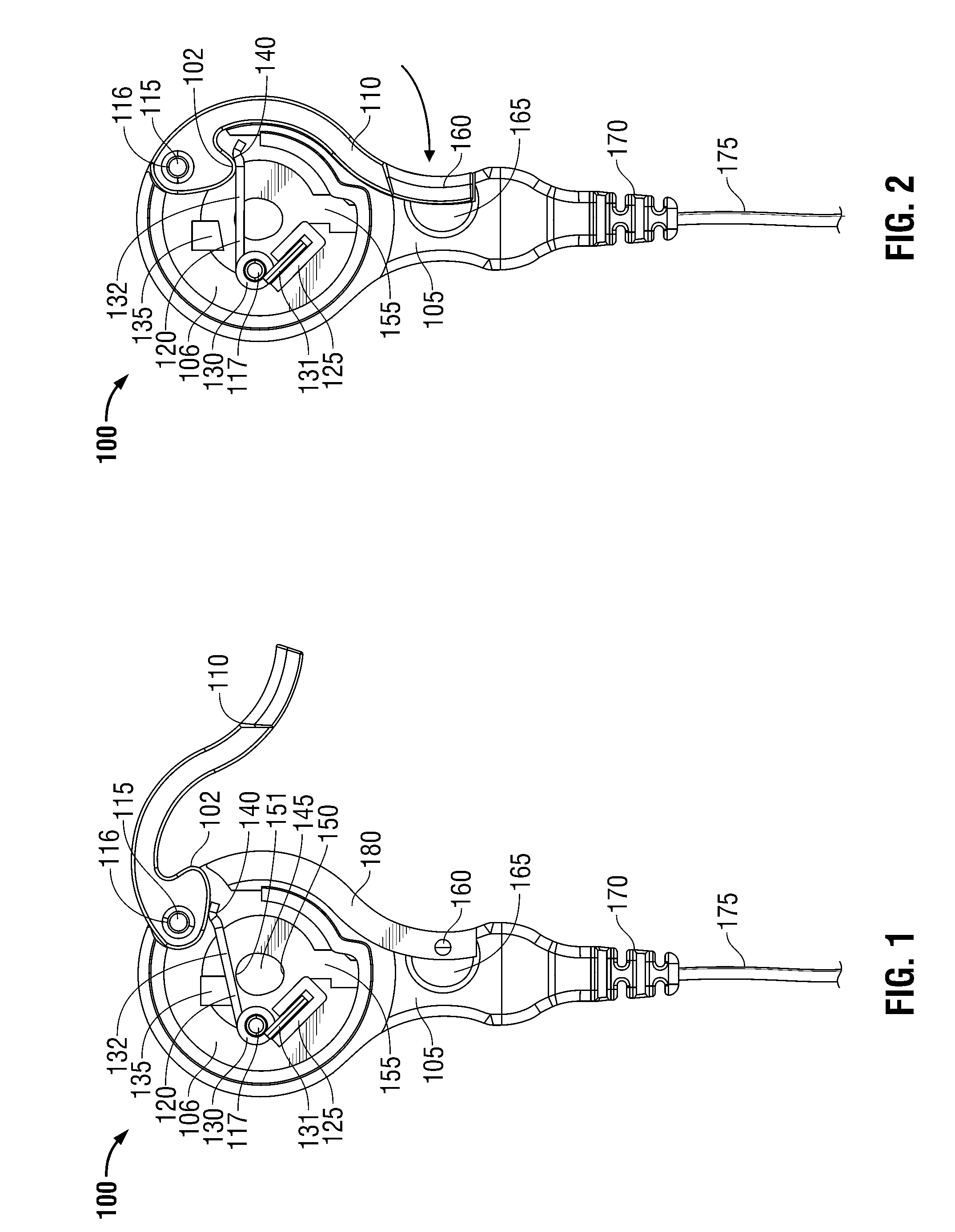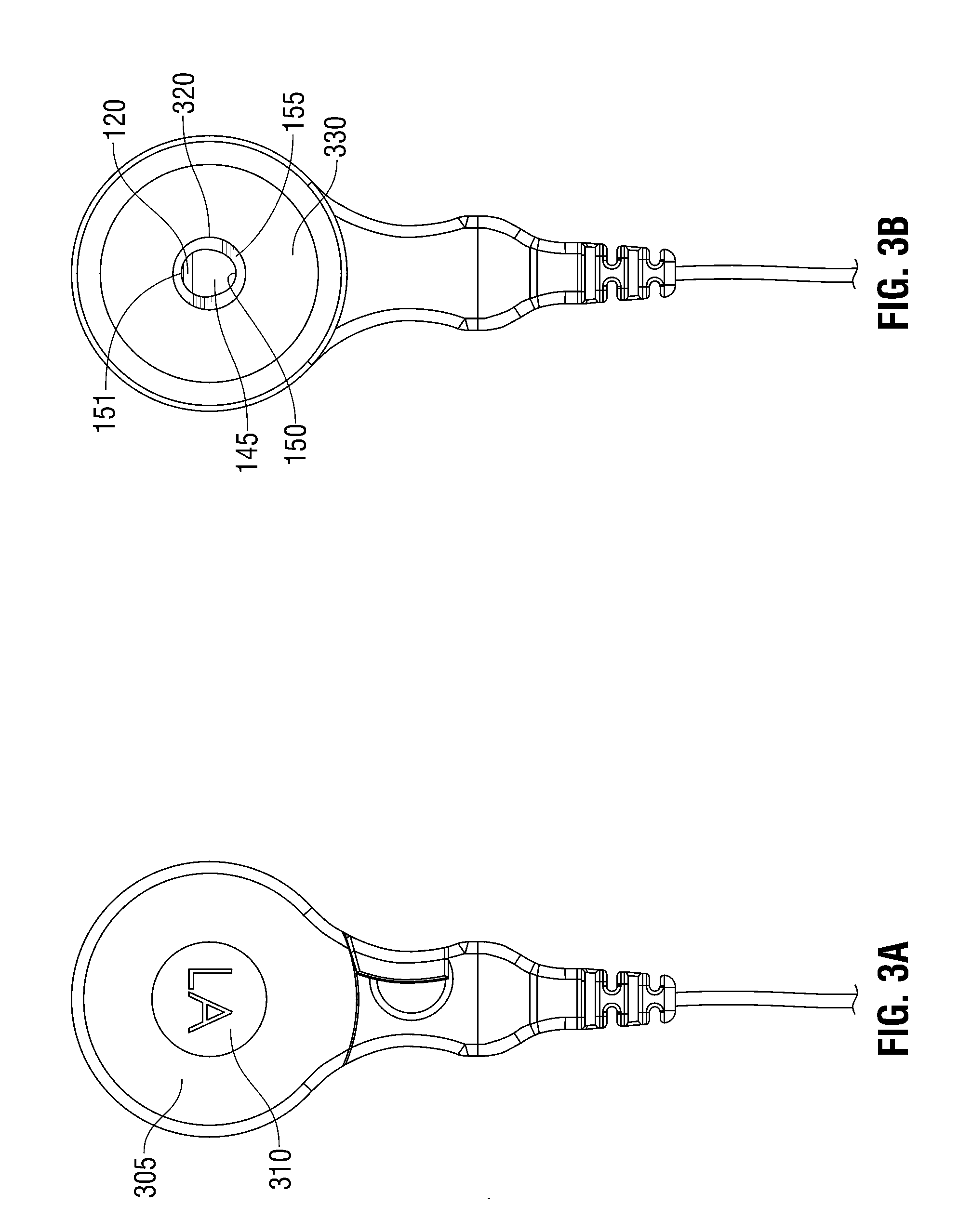ECG electrode connector
a technology of ecg electrodes and connectors, which is applied in the direction of coupling device connections, diagnostic recording/measuring, applications, etc., can solve the problems of patient discomfort, patient discomfort, and patient discomfort, and achieve optimal electrical coupling
- Summary
- Abstract
- Description
- Claims
- Application Information
AI Technical Summary
Benefits of technology
Problems solved by technology
Method used
Image
Examples
Embodiment Construction
[0051]Embodiments of the presently disclosed ECG electrode connector and method are described herein in detail with reference to the drawings, in which like reference numerals designate identical or corresponding elements in each of the several views. As shown in the drawings and as described throughout the following description, and as is traditional when referring to relative positioning on an object, the term “proximal” refers to the end of the apparatus which is closer to the monitor and the term “distal” refers to the end of the apparatus which is further from the monitor. In the following description, well-known functions or constructions are not described in detail to avoid obscuring the present disclosure in unnecessary detail.
[0052]Referring to FIGS. 1, 2, and 3A, there is shown an embodiment of an ECG electrode connector 100 having a thumb cam lever 110. The connector 100 includes a housing 105 that includes a cavity 106, a pivot pin 115, and a thumb cam lever 110 having a...
PUM
 Login to View More
Login to View More Abstract
Description
Claims
Application Information
 Login to View More
Login to View More - R&D
- Intellectual Property
- Life Sciences
- Materials
- Tech Scout
- Unparalleled Data Quality
- Higher Quality Content
- 60% Fewer Hallucinations
Browse by: Latest US Patents, China's latest patents, Technical Efficacy Thesaurus, Application Domain, Technology Topic, Popular Technical Reports.
© 2025 PatSnap. All rights reserved.Legal|Privacy policy|Modern Slavery Act Transparency Statement|Sitemap|About US| Contact US: help@patsnap.com



